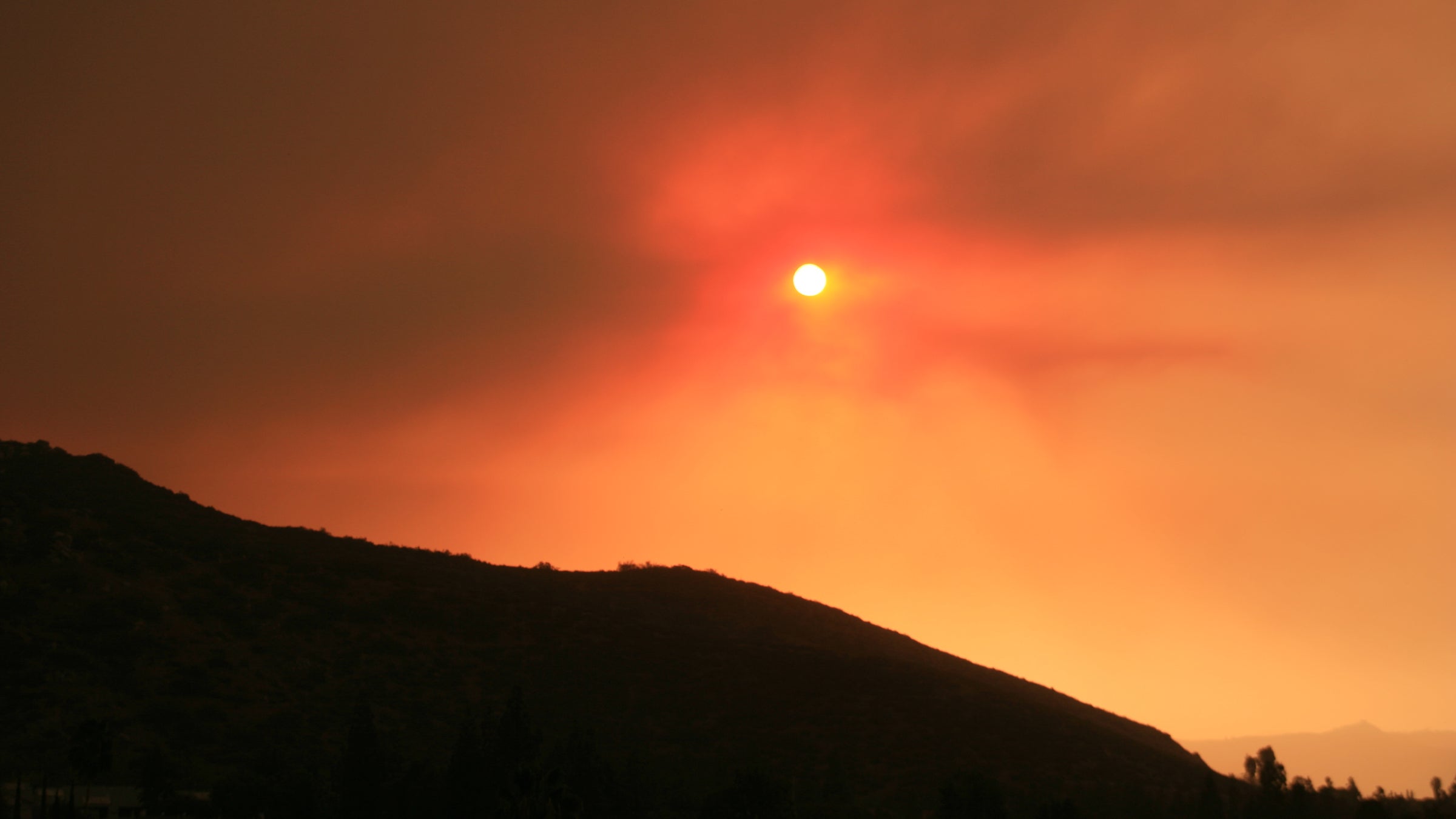What Do Thru-Hikers Need to Know About Wildfires?

Wildfire smoke casts a pall over the sky near San Diego. (Photo: slworking2)
This is Ask a Thru-Hiker, where record-setting long-distance hiker Liz “Snorkel” Thomas answers your questions about life on the trail.
Dear Snorkel,
Meteorologists are predicting a bad wildfire season in the western U.S. this year—but this is the year I finally have time and funds to go on a thru-hike. Will it even be possible to do a continuous end-to-end thru-hike this summer? How can I prepare for a wildfire-filled year?
Blazing Up the Trail
Dear Blazing,
Years of record blazes in the West are showing thru-hikers first-hand the impacts of wildfire. A changing climate and decades of fuel-creating forest management policy have combined to make wildfires along a long trail not the exception, but a given. If you’re thru-hiking a long trail in the West like the PCT, CDT, or PNT, the question isn’t whether a fire will interrupt your hike, but when.
Wildfires demand thru-hikers make a big, and often dream-popping, mental shift. In a drought year, an end-to-end hike connecting footsteps from Mexico to Canada is more fiction than reality. Large swaths of the PCT are closed for years due to previous year’s fires as we wait for vegetation to re-establish and soil to stabilize. You’ll likely know about these sections before you start your hike, so you can come up with a plan to get around the closures.
It’s harder to plan for the unknown fires that form after you begin your hike. Even if trails aren’t closed, hiking in smoke is bad for your health and potentially deadly. Like any other backpacking skill you learn before starting your hike, it’s important to know how to react if you see smoke or signs of wildfire.
The good news is that the PCT, CDT, and PNT all have trail organizations that are looking out for thru-hikers. The PCTA, CDTC, and PNTA post frequently updated fire reports on their websites. These organizations work with land managers to develop hiking routes that detour around fires. These detours may increase the distance between your resupplies, but it beats the alternative of having to coordinate shuttle rides around a fire.
Fire reports also note when trails are closed or when you need to evacuate. Don’t continue through closed sections. Fire crews are risking their lives to extinguish the fire. They can’t be spending resources on evacuating hikers. Additionally, the fine for being caught in areas closed for fire are enough to end your thru-hike.
To prepare for thru-hiking in a wildfire-prone year, plan to check the fire reports as diligently and frequently as you check the water report. In both cases, having current data about conditions can be life-saving. Many thru-hiker specific maps are zoomed in to show the trail only, so bring maps that show the broader general area in case you need an escape route.
Something the trail organizations won’t tell you is that there’s actually a silver lining to trail closures. My friend who goes by the trail name AYCE (‘All You Can Eat’) thru-hiked the PCT, but had to shuttle around a section in Northern California due to fire. The following year, his tramily (trail-family) had an excellent excuse for a reunion: hiking that section together!
I’ve gone back to the Pasayten Wilderness, which was on fire during my PNT thru-hike. I was only out for a week but it felt like I was reliving my adventure. While life may not hand me the time and funds to take off another 4 months for a thru-hike, filling in that week-long gap came with a purpose. It felt like I was on a mission. I don’t get that feeling on a typical week-long backpacking trip.
There’s a special satisfaction that comes from completing unfinished business. If you’ve hiked from Mexico to Canada, you’ll feel accomplished even if a fire blocked you from continuous footsteps. But when you go back and hike that fire-closed section, you get to feel a similar satisfaction all over again.
As a thru-hiker, it’s your job to not be part of the problem. One thru-hiker-caused fire makes the rest of us look bad—and makes it a lot harder for land managers and local townspeople to treat us well. Help firefighters where you can by getting out of their way and evacuating when necessary. Learn the proper way to report fires. If you see a smoldering campfire, put it out if you can and call for help if you can’t.
Think twice about whether you really need a campfire. They’re banned in many forests in the West and, even in wet years, most thru-hikers don’t have the time or energy to make them. No matter how careful any backpacker is, one mistake could cost people their lives, not to mention criminal charges and millions of dollars of damage that the firestarter may be liable to cover.
Fire season is no joke for distance hikers, but it’s part of the new normal. You’ll still have fun out there. Thru-hikes in all years require creativity and flexibility to deal with the problems the trail throws at you, be that snow, bears, or wildfires. As thru-hikers say, “The trail may take, but it always provides.”
—Snorkel